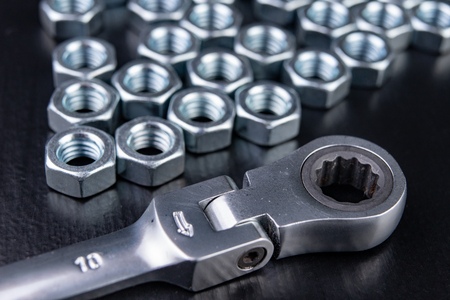1. Introduction to Beadlock Wheels
Beadlock wheels are a popular choice for off-road and high-performance applications, but many enthusiasts wonder if they are truly necessary. To understand their importance, its essential to know what they are, their purpose, and how they function.
What Are Beadlock Wheels?
Beadlock wheels are specially designed rims that use a mechanical locking system to secure the tire bead in place. Unlike traditional wheels, which rely on air pressure to keep the tire seated, beadlock wheels use a ring that clamps the outer bead to the rim, preventing it from slipping off.
Purpose of Beadlock Wheels
The main purpose of beadlock wheels is to prevent tire debeading, particularly in extreme conditions where tires are aired down for better traction. By securing the tire bead, they help maintain stability and grip in challenging terrains.
How Do Beadlock Wheels Work?
Beadlock wheels function by using a metal ring that is bolted onto the outer edge of the wheel, clamping the tire bead in place. This prevents the tire from slipping off the rim when operating at low pressures or under high lateral forces.
Beadlock Wheels vs. Traditional Wheels
To better understand the differences between beadlock and traditional wheels, the following table outlines their key features:
| Feature | Beadlock Wheels | Traditional Wheels |
|---|---|---|
| Bead Retention | Securely clamps the bead | Relies on air pressure |
| Performance in Low Pressure | Excellent for off-roading | Higher risk of debeading |
| Usage | Off-road, racing | Daily driving, general use |
| Installation & Maintenance | Requires precise assembly | Easy to install and maintain |
Applications of Beadlock Wheels
Beadlock wheels are commonly used in high-performance applications, including off-road racing, rock crawling, and extreme trail riding. They allow drivers to run lower tire pressures without the risk of losing a tire, providing better traction and control.
Are They Necessary for You?
While beadlock wheels offer many advantages, they are not always necessary for every driver. If you frequently drive in demanding off-road conditions or participate in racing, they can be a valuable upgrade. However, for typical street driving, traditional wheels may be a more practical option.
2. Benefits of Beadlock Wheels
When it comes to off-road and high-performance applications, beadlock wheels offer several advantages. These benefits primarily revolve around better tire retention, improved traction, and superior off-road performance. Let’s take a closer look at why beadlock wheels are a popular choice for enthusiasts and professional drivers alike.
Enhanced Tire Retention
One of the main reasons for using beadlock wheels is their ability to keep tires securely in place. Under extreme driving conditions, such as rock crawling or high-speed desert racing, traditional wheels run the risk of tires slipping off the rim. Beadlocks prevent this by clamping the tire bead to the wheel, ensuring a firm grip even at low air pressures.
Improved Traction
Lowering tire pressure increases the contact patch of the tire, which provides better grip on loose or uneven terrain. However, regular wheels may not hold the tire bead securely at low pressures. Beadlock wheels solve this issue, allowing drivers to safely reduce air pressure for maximum traction.
Comparison of Standard vs. Beadlock Wheels
| Feature | Standard Wheels | Beadlock Wheels |
|---|---|---|
| Tire Retention | May lose bead under stress | Locks tire bead securely |
| Air Pressure Tolerance | Limited to higher pressures | Can accommodate very low pressures |
| Traction Performance | Less grip at low pressures | Better traction in off-road conditions |
| Suitability for Extreme Off-Roading | Moderate | Excellent |
Better Off-Road Performance
Off-road enthusiasts and racers benefit from beadlock wheels because they allow tires to perform at their best on difficult terrain. Whether tackling rocky trails, sand dunes, or mud, beadlocks provide the stability and reliability needed for demanding environments.
Why Off-Road Drivers Prefer Beadlock Wheels
- Greater control: The ability to run lower air pressure allows for better vehicle handling.
- More durability: Beadlocks reduce the chances of tire failures in rough conditions.
- Versatility: Suitable for a variety of off-road conditions, from mud to steep inclines.
While beadlock wheels may not be necessary for every driver, they provide significant advantages for those who demand top-tier off-road and high-performance capabilities. Whether youre an off-road adventurer or a competitive racer, these wheels can enhance your vehicles performance and handling.
![]()
3. Potential Drawbacks and Challenges
Beadlock wheels offer undeniable advantages for off-road and high-performance applications, but they come with certain drawbacks. Before investing in beadlock wheels, its essential to weigh the downsides, including cost, maintenance, legal considerations, and added weight.
Higher Cost
Beadlock wheels are significantly more expensive than standard wheels. This price difference is due to the specialized design, additional materials, and the complexity of the manufacturing process. Here’s a comparison between standard and beadlock wheels in terms of costs:
| Wheel Type | Average Cost per Wheel |
|---|---|
| Standard Alloy Wheel | $150 – $400 |
| Beadlock Wheel | $300 – $800 |
The higher cost of beadlock wheels means that outfitting a full set can be a substantial investment, especially for those who don’t frequently engage in extreme off-road driving.
Increased Maintenance
Beadlock wheels require more maintenance than traditional wheels. Over time, the bolts securing the outer ring must be periodically checked and retorqued to ensure proper function and prevent air leaks. Regular inspections are necessary to avoid loose bolts, which could lead to tire failure in extreme conditions.
Legal and Street Legality Issues
In many areas of the United States, beadlock wheels are not DOT-approved for on-road use. This makes them a concern for those who plan to drive both on- and off-road. Some manufacturers offer simulated beadlock wheels, which provide the aesthetics but lack the functional locking mechanism, making them street-legal.
Additional Weight
Beadlock wheels tend to be heavier than traditional wheels due to the extra components required to secure the tire bead. The added weight can affect vehicle performance in several ways:
- Reduced Fuel Efficiency: Heavier wheels contribute to higher fuel consumption.
- Slower Acceleration: Increased rotational mass can impact acceleration times.
- More Strain on Suspension: Extra weight can put additional stress on suspension components.
Conclusion
While beadlock wheels offer clear benefits for off-road applications, they come with significant drawbacks that should not be overlooked. The increased cost, extra maintenance, potential legal restrictions, and added weight can make them impractical for everyday drivers. Those considering beadlock wheels should carefully assess whether the advantages outweigh the downsides for their specific driving needs.
4. Beadlock Wheels vs. Traditional Wheels
When choosing wheels for high-performance applications, its essential to understand the key differences between beadlock and traditional wheels. Both have their strengths and are suited for different driving conditions. Lets take a closer look at how they compare in terms of performance, reliability, and overall functionality.
Performance Differences
Beadlock wheels are specifically designed for off-road and high-performance applications. They allow drivers to air down their tires for better traction without worrying about the tire separating from the rim. Traditional wheels, on the other hand, rely solely on air pressure and the wheel’s bead seat to keep the tire in place, limiting how much air can be released for optimal grip.
Reliability Factors
Reliability is a major concern for serious off-roaders. Beadlock wheels offer superior tire retention in extreme conditions, reducing the risk of a tire slipping off the rim during aggressive maneuvers. However, they require regular maintenance to ensure the bolts holding the beadlock ring are properly torqued. Traditional wheels are more low-maintenance but can be less reliable in low-pressure conditions or rough terrain.
Suitability for Various Driving Conditions
The best choice between beadlock and traditional wheels depends on how and where you drive. Below is a comparison of their suitability across different conditions:
| Driving Condition | Beadlock Wheels | Traditional Wheels |
|---|---|---|
| Rock Crawling | Excellent – Prevents tire bead from separating at low pressure. | Less Suitable – Risk of de-beading under low pressure. |
| Desert Racing | Ideal – Keeps tire secure in high-impact environments. | Can Work – But may struggle with extreme conditions. |
| Daily Driving | Not Recommended – Heavier and requires frequent checks. | Best Choice – Low maintenance and DOT-approved. |
| Mud and Sand | Great – Allows very low tire pressure for better flotation. | Fair – Tire pressure must stay higher to avoid issues. |
Key Takeaways
Beadlock wheels excel in off-road and competitive driving scenarios but require more upkeep and are not always street-legal. Traditional wheels, though not as specialized, provide convenience and are suitable for everyday use. Choosing between the two depends on whether maximum off-road performance or ease of use is more important to you.
5. Five: Are Beadlock Wheels Necessary for You?
Beadlock wheels are a popular choice for off-road and high-performance vehicles, but are they necessary for your specific needs? To determine if beadlock wheels are worth the investment, consider your driving style, the terrain you encounter, and your vehicles requirements.
Factors to Consider
Before deciding on beadlock wheels, evaluate these three key factors:
1. Driving Style
If you frequently push your vehicle to the limit in extreme off-road conditions or competitive racing, beadlock wheels can provide extra security by preventing tire bead separation. However, for casual off-roaders or street-driven vehicles, traditional wheels with properly inflated tires may be sufficient.
2. Terrain
The type of terrain you drive on plays a crucial role in determining the need for beadlock wheels. Heres a comparison of different terrains and their impact on wheel choice:
| Terrain Type | Beadlock Wheels Recommended? | Reason |
|---|---|---|
| Rock Crawling | Yes | Allows lower tire pressure for better traction without losing the bead. |
| Mud & Sand | Yes | Prevents de-beading when lowering tire pressure for flotation. |
| Gravel Trails | Maybe | Depends on the level of intensity; not always necessary. |
| Highway & City | No | Unnecessary for daily driving; can be heavier and require more maintenance. |
3. Vehicle Requirements
Your vehicle’s specifications and intended use also play a role in whether beadlock wheels are a good fit. Some factors to consider include:
- Factory Wheel Compatibility: Certain vehicles are designed for standard wheels and may require modifications to accommodate beadlocks.
- Street Legality: In some areas, true beadlock wheels are not road-legal, limiting their use to off-road environments.
- Maintenance: Beadlock wheels require regular inspection and torque checks, making them higher maintenance than traditional wheels.
Final Thoughts
Determining if beadlock wheels are necessary depends on how and where you drive. For hardcore off-roaders tackling challenging terrains, they offer undeniable advantages. However, if your driving is limited to highways and light trails, standard wheels are typically sufficient.

